We asked several HIT vendor executives the following question:
What are your general impressions of the Final Meaningful Use regulations and how might the regulations impact your company’s go-forward plans for products and implementations?
Glen Tullman, CEO, Allscripts
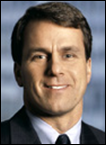
The new rules will not have a significant impact on our go-forward plans on products and implementations. We have been expecting this for some time now, and nothing in the final rule has changed what we believed our products would need to accomplish. We’ve guaranteed that our EHRs will meet the Meaningful Use certification criteria and they will.
Moreover, Allscripts has and will continue to play an active role in supporting our clients on Meaningful Use. Our Stimulus program makes it easy for physicians to participate by providing a “no payments for six months” option that bridges the gap until they receive their stimulus funding. And we’ve spent the last year and a half developing and fine tuning processes for accelerating the deployment of our EHRs to help meet the demand we anticipate in this market.
This is a real tipping point for our industry. Some physicians have been hesitant to move forward, waiting until the final rule was out before investing in an EHR and taking advantage of the incentives that the federal government has put in place. Now that the final rules are in place, there is no longer any reason to wait — the time to act is now.
Brad Boyd, Vice President, Culbert Healthcare Solutions

The Final Rule on Meaningful Use has provided a defined target by which hospitals, provider groups, and application vendors must strive to achieve. As a consulting firm whose offering includes vendor selection as well as application implementation / optimization services, we are now in a stronger position to assist our clients with establishing baselines for the Core Set metrics.
For the past four years, our firm has focused on implementation strategies which drive physician adoption, while maintaining or enhancing physician productivity and revenue cycle performance. The biggest impact on our firm and application vendors will be to accelerate the implementation timeline in order to enable clients to achieve the maximum financial incentives provided by ARRA, without compromising the quality of the implementation.
Performance metrics and benchmarking have been central components of our assessment, planning, and implementation engagements. The management adage, “You Can’t Manage What you Don’t Measure” is as true today as it ever was. By focusing healthcare organizations on the measures that drive improvements to patient care and quality outcomes, CHS will benefit both as a consulting firm as well as a consumer of healthcare services.
Girish Kumar Navani, CEO and Co-Founder, eClinicalWorks

We are pleased that the Meaningful Use criteria have been defined. The bulk of the work now will be on educating customers.
Providers need to be informed on the milestones and criteria that have been set forth and the responsibility for that is on the vendors. eClinicalWorks is currently developing tools for its customers to provide them with the education needed to ensure they are utilizing their system in a manner consistent with the Meaningful Use criteria.
Rob Harding, President and CEO, FormFast
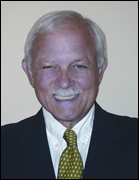
The waiting game is over, for now. The announcement of the final rule on Meaningful Use clears a pathway for providers to participate in the government’s incentive program.
But to be truly effective in transforming US healthcare, the process must be extended in two key directions.
First, while the industry is making good progress creating usable digital data within an EHR tool, information portability is in its infancy. Interoperability standards must be further developed and enforced among competing products.
The second key direction speaks to the need for automation of the workflow processes not addressed by the stimulus package. Most of the paperwork burden in the hospital today will not be eliminated through use of an EHR. There are thousands of forms completed manually that never become part of the medical chart, such as corporate contracts, purchase contracts, and human resources documents.
With Meaningful Use regulations in place, FormFast anticipates a return to sanity from the frenzy of HIT strategizing. The final rule places our clients in a decision-making and action-oriented mindset, but it also brings physicians and nurses into the automation end-game. Having influenced those significant players, the organizational culture will evolve to allow automated administrative workflows to ripen.
Tee Green, President and CEO, Greenway Medical Technologies
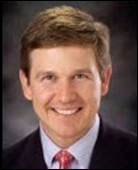
We feel that CMS & the ONC did well with the Final Rule clearly recognizing the need for a manageable set of requirements, on the care provider side as well as EHR software provider side, vital to the foundation of a 21st century sustainable healthcare system.
Stage One criteria supports the creation of patient data liquidity and a credible, useable electronic health record, which at the same time can be achieved in terms of available functionality in step with the timelines of certification and maximum 2011 incentives. Greenway customers are already poised to achieve the final core and menu sets of requirements, and I think for all of the nation’s Eligible Professionals and Eligible Hospitals, once they recognize Stage One can be managed and achieved, the future goals of a national health information network and improved population health will be widely adopted.
As Greenway stated in its July 14 press release, for our customers, we have guaranteed the certification requirements that will align with the Meaningful Use objectives. From the time our company’s leadership offered functionality testimony in the NCVHS hearings during the early creation of Meaningful Use and onto our current CCHIT certification level, our single-database and interoperable PrimeSuite® EHR platform has been a go-forward solution for current and future customers not only for achieving Meaningful Use stages but for the totality of providing the most advanced and efficient patient care today and in the future in terms of research, preventive medicine and coming payer models.
Robert Kitts, Executive Vice President & Partner, Huntzinger Management Group
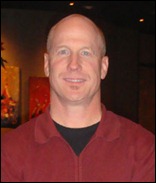
Our first impression of the Final Meaningful Use regulations is that it will be much easier to meet most of the criteria (i.e., CPOE 30% on medication orders, two categories of requirements core/menu, etc.).
However, many hospitals and physicians may find themselves struggling to adopt appropriate workflow changes to demonstrate compliance. We continue to work with our clients to assist them in implementing appropriate and certified technologies with a key focus on workflow design. Just utilizing certified technology will not guarantee Meaningful Use compliance.
John Tempesco, Informatics Corporation of America

Changes in Meaningful Use (MU) implementation reduce the minimum standards for adoption, provide more latitude, and allow for a more orderly and incremental approach to implementation. But it’s important to remember that the timeframes have not changed. If health systems and their associated providers have not begun an assessment of their current status in achieving MU and developing a strategy for mitigating gaps, they may be too late.
The final MU ruling has established a minimum standard to participate in the health care industry and a catalyst for additional change. Most likely, accreditation bodies, certification boards, and private insurers will use this to establish more stringent requirements.
Once a cherished competitive advantage, clinical data sharing among health care entities will become essential for meeting minimum MU requirements, and competitive health care organizations will be forced to form symbiotic relationships.
ICA has invested time and focus as MU rules have evolved to provide a component-based offering that enables organizations to start with a base solution designed to achieve requirements for 2011. CareAlign™ can be implemented and used as a base system; its component-based design allows organizations to evolve to meet MU standards for 2011 — and beyond.
Steve Tolle, Senior Vice President, Physician Solutions, Ingenix
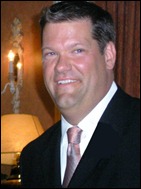
CMS’ Final Rule on Meaningful Use removes uncertainty about the capabilities EHRs must support, the functions users must perform, and the measures for certifying physicians and hospitals to receive the federal incentives.
Importantly, the Final Rule sets realistic thresholds that physicians can be prepared to meet for CPOE, electronic prescribing, and other measures. As a result, more physicians will qualify for the Medicare reimbursements.
This is good news, because improving success and reducing the expense and risk of health IT for doctors will be critical to promoting better delivery of health care services — the reason for the federal incentives.
At Ingenix, we focus on the most underserved physician practices — those with 25 and fewer doctors. These practices use EHRs the least, while providing primary care to the most Americans. They don’t have the resources and staff large groups have. Health IT must be simple, save time, and add value from Day One.
That’s the lesson from our Model Office project in Michigan. There, we tested the workflow design, software implementation and training practices that need to be delivered for health IT implementations to be successful. Our resulting rapid-deployment model will support health IT adoption on a national scale.
From a product perspective, CareTracker EHR is ready for Meaningful Use. All 10,000 users have access to those features — that’s the power of the cloud-based model.
This is an exciting time for health IT. The technology has changed. The incentives are here. We can make this simple, and help doctors be successful. That’s our mission.
Jay Anders, MD, Chief Medical Information Officer, MED3OOO

Generally, I was very pleased to see that ONC along with HHS decided to relax the requirements for physicians to comply with Meaningful Use. By having 15 core elements followed up with five elective elements allows more physicians to more easily comply with requirements to receive the stimulus dollars. Vendors on the other hand are still required to meet all of the existing standards in the interim final rule, with the exception of the two that were removed for submission of claims and insurance eligibility checking.
Physicians should be very happy with the outcome of the final regulations. It is interesting to note that even given the relaxation of the regulations that occurred, the federal government will receive information regarding care delivery in the United States in a much broader format than it has ever received a before. This is exactly what the federal government is looking for. We will really not know how these regulations will be complied with until the ambulatory certifying and testing bodies are selected and specific criteria are tested, reviewed, and implemented.
The final regulations really did not change the product plan regarding Meaningful Use. We were planning all along to meet the NIST requirements, which essentially have not changed.
Daniel Rodgers, President and CEO, MedCo Data
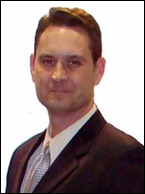
Overall, I’m glad that the final regulations are less complex and more relaxed than what had been proposed. In particular, I’m glad to see that the messages between CMS programs are more consistent, and that providers have greater flexibility in their approach to compliance.
The final rules also open the door to potential new revenue streams for some physicians, such as requiring that providers record the smoking status of 50% of patients 13 years and older. Medicare reimburses for smoking cessation, so this is an opportunity to grab a charge capture that many physicians have been skipping.
I’m less happy about how the core objectives are generalized toward ambulatory practices, which poses unique challenges for certain specialties. An example is vitals collection by specialties like dermatology or ophthalmology. This will be a huge workflow drain that could impact patient count. What makes it plausible is that the measure has been reduced to require data from just 50% of unique patients. Careful workflow guidance can minimize the impact, but specialists will need to invest in equipment to collect these measures.
For MedCo Data, our go-forward plans aren’t impacted, other than crystallizing our focus. Since our focus is on designing pathways for practices to fully adopt EMR systems and achieve quality outcomes, we’ve been developing strategies around meaningful use since the first drafts were issued.
Eric Demmers, Senior Vice President, Health and Life Sciences, MEDecision
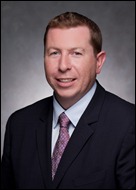
The announcement of the final Meaningful Use regulations is an important milestone in the proliferation of EHRs in particular, and health IT in general, to support reform mandates and help bring real, sustainable change to the healthcare system. It’s doubtful that the regulations will diminish the impact that the American Recovery and Reinvestment Act EHR incentive program will have on payer organizations or reform efforts. In fact, they offer more flexibility than those that were proposed in January, which should actually help speed EHR adoption.
Perhaps the most important ramification of the final regulations is that they effectively put EHR adoption on the fast track. Well, at least a faster track than any we’ve seen to this point. This will help promote the integration and exchange of clinical data throughout the health care ecosystem which is precisely the direction in which we must be headed to meet the mandates of reform. MEDecision has championed this approach for more than 20 years and, consequently, is very well positioned to accommodate the market’s changing needs. We will continue to pursue our core strategy while making the necessary augmentations to optimally support the evolving health care landscape.
James K. Lassetter, MD, Chairman and CEO, Medicity, Inc.
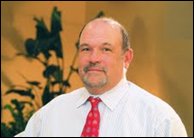
The final rule strikes the right balance between imposing too many requirements initially and not requiring enough to generate real improvement in the long term. The rule responds to industry stakeholders’ feedback and concerns in such a way that should enable achievable EHR adoption, innovation, and quality improvement.
By resisting pressure to set the bar for Meaningful Use too high, which would have favored more functionally rich EHRs, ONC will foster innovation in both the modular and comprehensive EHR spaces. This will level the playing field for providers, enabling them to deploy EHRs at a pace and depth of functionality that complements their workflow and business needs and positions them to qualify for maximum incentives.
And while we’ll have to wait to see the outcome of the overall effort, it is clear that we’re now set on a path that will lead to new innovations and a shot at a better healthcare system.
Richard A. Mahoney, President, MEDPlus

MedPlus, the health information technology subsidiary of Quest Diagnostics, is pleased to see that many of our Meaningful Use recommendations appear in the final rules, particularly those focused on offering physicians flexibility and a migration path to full EHR usage. The final rules offer physicians flexibility in how they choose to embrace technology, specifically, the creation of a core, plus a menu-type, list of criteria will create a manageable path for physicians to adopt EHRs.
We built Care360 EHR (www.Care360.com) on our scalable, flexible, modular web-based Care360 platform — already in use by more than 170,000 U.S. physicians for electronic laboratory ordering and results and e-prescribing — because we know that physicians are looking to avoid large capital investments and practice disruptions, and value the convenience of accessing critical patient information anywhere, anytime from their PC, laptop, or smart phone.
We strongly endorse the development of interoperable solutions, and Care360 EHR allows doctors to share notes and clinical information. We are pleased to see the patient in the government’s connectivity diagram, and believe strongly that informed patients are empowered to change behaviors and improve health. We continue to expect that Care360 EHR will achieve Meaningful Use certification in the fourth quarter of this year.
Charles W. Jarvis, FACHE, Vice President, Healthcare Services & Government Relations, NextGen
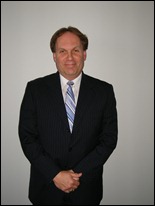
I don’t believe the Final Rule surprised those closely following the Meaningful Use criteria. Many predicted they would stay intact, although with eased compliance requirements. The Final Rule seems to bear this out. For example, the previous 75% e-prescribing obligation is now a more manageable 40%.
Washington sent a strong message: the EHR agenda is for real. In the words of David Blumenthal, the regulations are “ambitious but achievable.”
Physicians and hospitals can now move forward, yet the bar remains relatively high, so it is important to start engaging in EHR selection and executing Meaningful Use strategies as soon as possible.
Going forward, our responsibility is to give our clients the tools and resources necessary to help them reach Meaningful Use. We will also continue to support physicians, hospitals, and critical organizations like Regional Extension Centers, state health information exchanges, and health center-controlled networks (HCCNs), as well as expand our educational offerings through webinars, Meaningful Use guides and videos.
We expect our products to meet all requirements to be designated certified EHR technology. When the temporary certifying bodies are named, NextGen Healthcare will seek gap certification for any requirements not already validated in our preliminary certification by the CCHIT.
Janet Dillione, EVP and General Manager, Nuance Healthcare
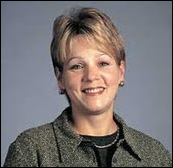
I believe the rule-makers did what they said they would do; they listened. They asked for comments and saw a significant response from the industry; they internalized the feedback and were able to react to what they heard. I don’t think the rules were relaxed too much. I agree with Dr. Blumenthal; it is important for these rules to be set at a level where it is possible for every willing provider to have a good shot at meeting Meaningful Use. We now have a clear understanding of what providers and hospitals must demonstrate in order to qualify for the first phase of ARRA EHR incentives.
The core function of Nuance’s solutions, including speech recognition and medical transcription platforms, is to support the use of EHRs in a very simple, important way; by making clinical data capture much more efficient. Dr. Blumenthal likens digitizing medical records to getting to the top of an escalator. To get to the top (fully electronic health records for every patient), first providers must step on the moving platform going up. It’s at this point where our solutions can ease the transition to EHRS. Because the majority of physicians are accustomed to dictation, the switch to point-and-click templates, where typing and mouse navigation is essential, can be unwieldy and sometimes impossible.
Speech recognition allows doctors to preserve their preferred method of dictating medical records. While there are different applications of speech recognition for the EHR, in most cases physicians use speech recognition as a replacement for their keyboard. Alternatively, physicians can create draft medical records for transcriptionists to review and edit for them. In either scenario medical records are created fast and with limited workflow interruption to the physician. Speech recognition is incredibly relevant to Meaningful Use, because if physicians get hung-up or stalled at the usability step with EHRs, the extended value of the systems will never be realized.
Beyond speech recognition, Clinical Language Understanding (CLU) is an emerging and important component to the future of healthcare IT. There is a fundamental need to support the unstructured data environment that is so prevalent in healthcare today. CLU presents a real opportunity to protect the workflow of the clinicians who are delivering the care while creating an environment conducive to analytics, reporting and to quality measurement. CLU is an extremely exciting, emerging technology that Nuance is investing heavily in and will begin to role out solutions this year.
With Meaningful Use, the government and the provider communities have embarked on a collaborative journey to raise the bar of healthcare delivery. As a member of a vendor community, we are investing in trying to help by getting solutions and tools out into the market that make healthcare IT systems more useable and more widely embraced. We are working to contribute solutions that empower physicians to seamlessly use EHRs and other healthcare IT solutions to improve patient care.
William O’Toole, O’Toole Law Group
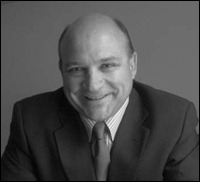
As expected, the final rule made accommodations to the requirements for Meaningful Use. I believe the reductions in criteria, by percentage or other means, is a far better idea than delaying the deadlines for the original criteria by years (although some criteria were dropped from Stage 1). The whole idea is to stimulate the adoption of Meaningful Use, and sooner rather than later.
Lowering the requirements to a more attainable level was smart. It will help maintain focus in the near term, rather than build in an undesirable “time out” period. If the other path were chosen (delaying the deadlines) I believe that many organizations would lose interest and put things off until later. Then when “later” arrives, the original requirements would remain and some would simply throw in the towel and not attempt achieving Meaningful Use.
One of my prior submissions to HIStalk was met with some criticism when I praised the work being done regarding Meaningful Use and those doing the work. I still stand by that opinion. This is a huge undertaking for our country and its health care system, one that I truly believe will work and will benefit “we the patients” in the long run.
Betty Otter-Nickerson, President, Sage Healthcare Division

Sage recognizes meaningful use as a positive first step in a rapidly changing healthcare economy as it will provide the foundation for a transformed care and reimbursement model based upon long-term outcomes and accountability. Sage is pleased that CMS has made numerous revisions to the final rule after careful consideration of public comments from physicians and the vendor community as we believe that the final rule will make it easier for practices to qualify for meaningful use. However, even with the changes to the preliminary rule, enough remained the same so there were very few surprises to the final language of the rule.
As a whole, the final rule has provided clarification for the future and has offered all of us some much needed direction. Many of the areas that were once gray in the proposed rule have been cleared up in the final rule, making it less complex for us all – vendors, practices and physicians — to understand.
Still, the most pressing difficulty with the final definition continues to be its complexity. Few if any practices will have the time (and many won’t feel they have the incentive) to read through more than 800 pages and draw tactical conclusions from the ruling. The challenge for the individual provider may be finding what the rule represents and what they need to do and why to qualify for the federal incentives; though the rule is far less complex than it might have been, there is still much confusion surrounding this process. Meaningful use may become challenging for vendors as they attempt to simplify and package systems according to the federal checklist while explaining the operations, system capabilities and reasons for an EHR in the new healthcare economy.
Sage’s plans for go-forward remain the same relative to products and implementation, and we will continue to support those in healthcare and those that practice medicine. Healthcare is about providing care and delivering positive patient outcomes and there is a continued need to emphasize to those of us in the healthcare community that the intention of these changes to the system through meaningful use is to get the care back in healthcare. Meaningful use may be a push toward getting practices to adopt electronic records, but it’s also meant to improve doctors’ work lives and practices by streamlining processes and creating efficiencies. With so much attention being paid to the stimulus dollars associated with meaningful use, let us not forget that we are all working to deliver a higher quality of care and improve the overall health of our citizens.
Todd Johnson, President/CEO, Salar, Inc.

Our consensus at Salar is that the Final Meaningful Use regulations enable more facilities around the country to achieve Meaningful Use for 2011.
This is a positive step in introducing new capital to hospitals for reinvestment in information technology. Hopefully, the result of the eased regulations will be that hospitals can use the funds received by ARRA to invest in the right platforms for the future.
Salar’s Physician Documentation suite is in use today by hospitals who have already achieved proposed Meaningful Use benchmarks beyond the 2011 requirements. Moving forward, we intend to continue to provide our customers with the solutions that fill their clinical, financial and operational needs for 2011, 2013, 2015, and beyond.
Evan Steele, CEO, SRSsoft

The fact that the final regulations for Stage 1 are slightly less onerous than the proposed regulations doesn’t affect our plans. Measures were only deferred, not eliminated, and the negative impact on physicians’ productivity is still the key issue.
SRS clients have been reaping the benefits of increased efficiency and better patient care/service, along with those of e-prescribing, order management, reporting, integration of lab results, etc. since the company was founded 13 years ago.
Three questions drive our response to Inga’s question:
- How does the legislation impact our clients? The legislation and measures are clearly focused on primary-care physicians and hospitals. Our clients tend to be medium-to-large practices of high-performance specialists, who find many measures irrelevant.
- What is the value to our clients of entering data to meet government metrics? Our focus is on increasing physician productivity, not slowing them down by requiring data entry not relevant to their practice. If a change doesn’t improve productivity, it doesn’t get onto our product development roadmap.
- What options do our clients have? As David Blumenthal reminded providers, “this is a strictly voluntary program.” The choice is: continue on the productivity-improvement path or opt for the Meaningful Use / data-entry compliance path.
The SRS productivity-based hybrid EMR will continue to be the SRS flagship product, but we will offer a migration path to compliance should any clients chose that path in the future. Two options are now in place at SRS, and our clients will always have the choice
Chris Callahan, Vice President of Product Management, Sunquest; Tom Wilson, In-house Counsel, Sunquest

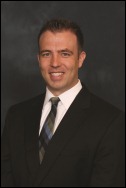
The final rule is largely what we expected, without significant change. It clarifies the requirements for interoperability and adoption financial incentives.
A second rule setting standards, implementation specifications, and certification criteria for determining value with EHR is likewise a good standard. Both rulings have solid foundations, and neither set the bar too high nor too low for the marketplace.
Clients should not be surprised by the lack of movement, as the politics have changed since the original passage of the bill. At the time they were all about stimulus, and now they are largely about deficit reduction. CMS is going to make it hard for providers to get their money. As such, they should not overspend on clinical projects, and should instead be very focused on meeting ARRA meaningful use requirements in their labs.
Sunquest has begun temporary ‘modular certification’ of our products. This will help improve decision making at the point of care and meet the stated goals of Health and Human Services and the Office of the National Coordinator.
Health and Human Services will thus enable eligible providers to combine certified modular solutions in order to achieve Meaningful Use provisions. This effort will deliver added assurance to customers and potential clients that Sunquest products are certified by a respected third party.
Sunquest is also proceeding to expand its current use of Logical Observation Identifiers Names and Codes as the universal standard for identifying medical laboratory observations. These LOINC codes are primarily used for order intake, and Sunquest is ahead of the rest of the industry in preparing to ensure standardization of laboratory information exchange in the most efficient manner possible.
Bruce Cerullo, President and CEO, Vitalize Consulting Solutions, Inc.

I said before, President Obama’s commitment to healthcare IT improvement could be a boon that leads us to better, safer, more available healthcare from health systems and for patients. After Tuesday’s announcement, I believe we’re a couple of huge strides farther in that direction.
No market prefers the unknown because it rarely renders positive effects. Since the release of the preliminary MU regulations and HHS’s subsequent asking for input, the HIT industry has been beset with the unknown: how to achieve Meaningful Use — before the deadlines — if we don’t know final criteria.
Now, we know. That’s good. Much to HHS’s credit, a clearer final regulation has emerged to replace a murky preliminary one.
CIO’s and physicians certainly exhaled after seeing realistic deadline and threshold revisions… Nobody likes being told what to do, let alone to what degree; but if you’ve got to take your medicine, now you get to choose the dose and flavor. Because HHS not only solicited feedback from the industry but used it, healthcare organizations will more aptly and quickly embrace, implement, and execute compliant EHR technology and reap the benefits for their patients and incentives for their survival.
Sean Benson, Co-founder and Vice President, Consulting, ProVation Medical, part of Wolters Kluwer Health

I was glad to see CMS back away from some of the more onerous requirements. Doing so gives providers a real chance to achieve Meaningful Use, which I don’t think was possible previously. In fact, I suspect that if CMS hadn’t eased requirements, many providers wouldn’t have bothered trying. This way, CMS is setting the stage to raise the bar for Meaningful Use down the road.
However, there were several areas that CMS should have addressed but didn’t, which could have negative implications. With its decision that alert fatigue was ‘beyond the scope of Meaningful Use,’ CMS missed an opportunity to deal with a significant obstacle to clinician adoption of CPOE and CDS. Also disappointing was the decision to exclude clinical documentation requirements based on an assumption that physicians who are using EHRs are unlikely to maintain separate paper progress notes. This could create significant gaps in the electronic availability of key patient information.
In terms of our go-forward plans, little will change. We’ll continue focusing on delivering the quality medical content and intuitive CDS needed to comply with Meaningful Use and other mandates. ProVation Order Sets, powered by UpToDate Decision Support , and Medi-Span Clinical both deliver intuitive clinical and medication decision support via CPOE. UpToDate supports the macro goals of HITECH, and ProVation Medical software eases the transition to ICD-10.




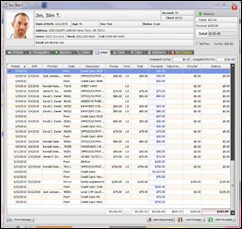


























The article about Pediatric Associates in CA has a nugget with a potentially outsized impact: the implication that VFC vaccines…